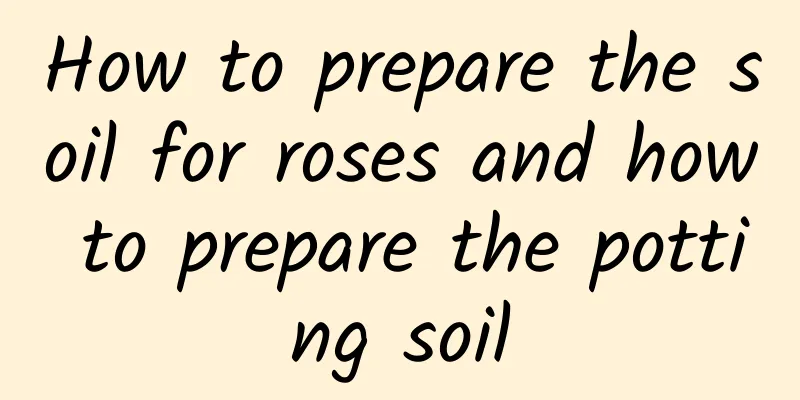How to grow spider plants hydroponically

Material preparation1. Transparent proportional containers, glass bottles, mineral water bottles, and cups are all fine, but if you want to grow hydroponically for a long time, it is recommended to choose a more beautiful container. 2. Scissors and disinfectant (potassium permanganate solution), mainly used for root pruning and disinfection. 3. Grow strong spider plant plants. methodContainer selectionThe roots of spider plants are white and thick, making them very suitable for viewing. The most important point is that there is no interference from the soil. Even in the hot summer, spider plants can grow in a cool environment. Therefore, when hydroponically cultivating spider plants, try to choose a transparent glass container so that you can view both the leaves and the roots, which is convenient for the administrator to observe the hydroponics and make timely adjustments. Nutrient solution preparationNutrient solution formula: 1.8g calcium nitrate, 0.62g potassium dihydrogen phosphate, 0.187g ammonium sulfate, 0.0278g ferrous phosphate, 0.62g potassium chloride, and 0.54g magnesium sulfate. (After many experiments, the effect is good!) Dilute the prepared nutrient solution with water. This culture solution can provide sufficient nutrients for spider plants and is more nutritious than the finished products on the market. But if you are dizzy looking at these chemical names, you should still buy the finished products on the market! Treating ChlorophytumTake the soil-grown spider plant out of the pot and rinse the soil from the roots with slow running water. Use scissors to cut off old and rotten roots, keep the whitish fibrous roots, clean up diseased and broken leaves, and make the spider plant look brand new. Then soak the roots of the plant in potassium permanganate solution for 10 minutes to disinfect. Rinse the leaves with a slow stream of water to clean the dirt and dust on the leaves. Be careful not to damage the leaf surface during the operation to ensure that the leaves are intact. Fixed positionPlace the processed spider plant into a hydroponic container. For a professional hydroponic container (with a hydroponic basket), fix the spider plant with stones to ensure that the plant is in an upright position. For an ordinary glass container, place the plant upright with the leaves close to the wall of the bottle. During the fixing process, avoid damaging the roots and allow the roots to spread out around the container. Add waterPour water along one side of the bottle until the water covers 1/3 of the plant's roots. Breeding methods and precautionsPlacement EnvironmentThe maintenance environment of hydroponic spider plants and soil-grown spider plants is not much different. They should be placed in a bright place to ensure sufficient light. If there is insufficient light, the leaves of the hydroponic spider plant will also be long and narrow and the color of the leaves will be dull. In addition, when the light is strong in summer, it is not allowed to be exposed to direct sunlight to avoid excessively high water temperatures, which will affect root growth. The best growth temperature for hydroponic spider plants is 15~25℃. When the temperature is above 30℃, the spider plants will stop growing and the leaf tips will turn yellow. In winter, the temperature should be kept above 12℃, as frostbite is easy to occur at 5℃. Water quantity and quality requirementsChange the water every 2 to 3 days in the early stage of hydroponics. After new roots grow, change the water every 7 days. If the water is less, just add water. When the roots grow to more than 3 cm, change the nutrient solution and change it every 2 weeks or so. While changing the nutrient solution, clean the roots of the spider plant and the bottle walls. The water used for hydroponics of spider plants is generally tap water that has been left for a day and the chlorine in the water evaporates before use. The frequency of water changes varies in different seasons. In spring and autumn, change the water every 7 to 10 days, in summer, change it every 5 to 7 days, and in winter, change it every 10 to 15 days. During the maintenance period, spray water appropriately according to the growth of the spider plant to keep the leaves clean. Root PruningAfter washing the roots, the spider plant grown in water needs a certain period of adaptation. The old roots that have not adapted will rot. Check and clean them in time. Do not use nutrient solution when there are wounds on the roots. Wait until the roots have adapted to the water environment and are growing normally before using nutrient solution. floweringThe hydroponic spider plant will bloom in about half a year. When it blooms, be careful not to spray water on the flowers to avoid them falling off prematurely. Prune the branches after the flowers fade to promote flowering the following year. Picture appreciationThe hydroponic spider plant has changed the appearance of the soil-grown one. You can see the emerald green leaves and the snow-white roots. Although it is just an ordinary plant, it can add some freshness to your home and make it more interesting. |
<<: How to grow Calla Lily in water
>>: How to grow hydroponic daffodils
Recommend
What fertilizer should be used to fertilize the Areca palm to make it grow faster? Urea and compound fertilizer will grow better.
Areca palm has a relatively high demand for ferti...
How to plant yacon and what is yacon
1. How to plant 1. Time: Yacon can be planted by ...
Choose this one for growing flowers during the National Day. The pink little flowers hang on the branches and it is easier to grow than the green ivy and spider plants!
In fact, in life, there are so many varieties of ...
The role of fusang chandelier
Landscape use of fusang chandelier Chandelier hib...
How to prune the elmleaf plum
Method of pruning the main branches of Prunus arm...
Does Phoebe sphenanthera prefer shade or sun?
Does Phoebe sphenanthera prefer shade or sun? Sma...
Why can't you grow jasmine at home?
1. Why can’t we plant Jasmine can actually be gro...
How to transplant Clematis cuttings
1. Transplanting time The cuttings of clematis ca...
Can orchids be planted in the yard?
Can orchids be grown in the yard? Generally, orch...
How to plant aloe vera? Planting time and method
Aloe Vera Planting Time It is best not to plant a...
Causes and treatments for yellow leaves of purple-backed arrowroot
1. Too much light Reason: Purple-backed arrowroot...
How to grow lavender
1. Seed processing When planting, choose seeds wi...
When does plum blossom bloom?
Flowering time and famous places to enjoy plum bl...
Why can't Clivia be given as a gift?
1. Reasons why you can’t send it at will (1) Acco...
What are the cultivation methods and precautions of copper coin grass
Growth habits of copper coin grass The pennywort ...









